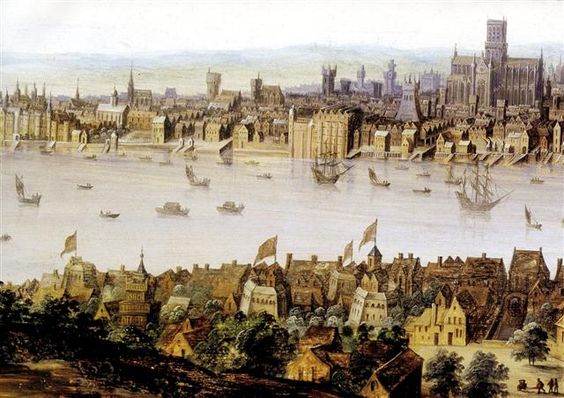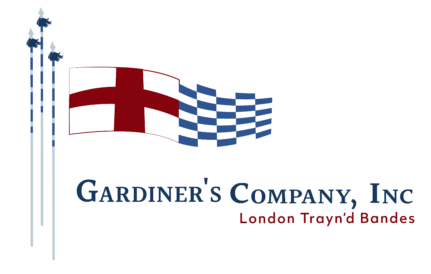We have often seen images of London in the late 16th Century. A popular one is the Visscher Long View, done in 1616, a portion seen here:

While it’s a somewhat accurate representation of the crowded Bankside of our time period, it misses the bigger picture of how the Southwark our personas lived in actually looked to them.
Recently, I’ve found a very interesting view of our neighborhood. It’s an image, artist unknown, found in the Album Amicorum of Jacob Fetzer, painted sometime around 1618. An Album Amicorum was a kind of friendship book or autograph book. They were popular with German students, who used them to record images and notes on their trips abroad. The images in them were sometimes rough sketches, but were often detailed pictures, done to commemorate people and places the students visited, painted by friends or commissioned artists.
The image from Fetzer’s Album is of London from the south looking north (the copy isn’t the full picture, but one from the book):

In the distance, we can see the City, including St. Paul’s, and the Tower off to the right. Closer in south of the river, the Tower Gate, with its heads displayed, can be seen. We also see both St. Savior and St. Olave churches, and the Globe, the Swann with flags waving, and bear baiting arenas. The presence of these landmarks attests to the accuracy of the painting, and makes it a reasonably reliable source.
To me, the abrupt end of the buildings is revelatory. I knew there were gardens and pasture south of the town, and to the east and west of Southwarke Long Street. But the sudden transition from crowded town to open fields is stark and surprising. We are used to dense cities giving way to less-dense urban areas, then suburban sprawl before we get to rural areas. And even those have houses and barns on them. Even today, driving through the country-side of England, you go from field to town, with no increasingly populated areas to ease you into almost the center of town.
Fetzer’s image shows how quickly the tightly packed streets of Southwarke transitioned into the pastoral fields shown here. I find the image fascinating; it makes our inn surrounded by forest a more believable recreation.
